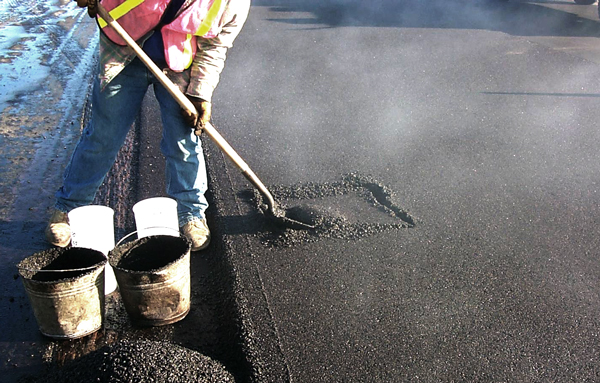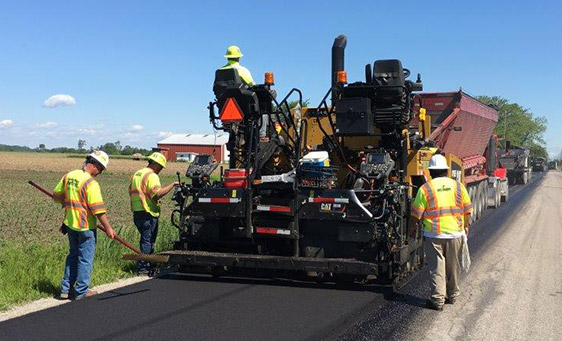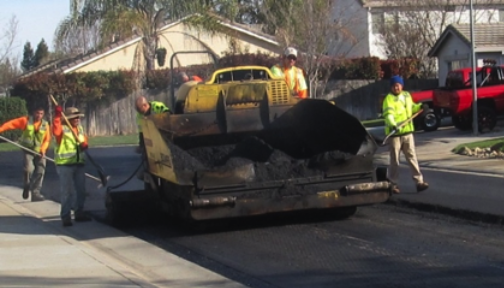Hot Mix Asphalt Paving: Redefining Industrial Residential Property Landscapes
Hot Mix Asphalt Paving: Redefining Industrial Residential Property Landscapes
Blog Article
Unlocking the Tricks of Warm Mix Asphalt Innovation
Discovering the midsts of hot mix asphalt innovation discovers a world where precise processes and exact solutions assemble to shape our roadways and facilities. The blend of fillers, binders, and aggregates isn't merely a building job but a tactical orchestration of toughness and performance. As we peer into the complex dancing of components, a tapestry of resilience and sustainability unravels. What lies underneath this surface area of asphaltic mastery, and what keys wait to be revealed in the realm of leading advancements?
Significance of Hot Mix Asphalt
Warm Mix Asphalt plays an essential duty in modern-day infrastructure advancement because of its durability and cost-effectiveness. As one of the most commonly used paving product for roads, freeways, and parking area, Hot Mix Asphalt uses a series of benefits that add to its importance in construction tasks. One vital benefit is its ability to hold up against hefty website traffic lots and extreme climate conditions, offering a trustworthy and long-lasting surface for transport networks. Additionally, Warm Mix Asphalt is cost-efficient in both initial construction and lasting upkeep, making it a preferred option for numerous facilities projects.
The toughness of Hot Mix Asphalt comes from its composition, which includes accumulations, binder, and filler materials that are thoroughly selected and blended to fulfill certain performance requirements. This exact mix results in a solid and versatile sidewalk that can sustain frequent usage without considerable wear and tear. Warm Mix Asphalt is 100% recyclable, further boosting its sustainability and environmental advantages. On the whole, the relevance of Warm Mix Asphalt in facilities development can not be understated, as it remains to be a cornerstone of modern-day construction methods.
Elements of Asphalt Mixes
The structure of asphalt blends is composed of carefully chosen accumulations, binder, and filler products that are crucial for accomplishing certain efficiency needs. Aggregates are the primary element of asphalt mixes, supplying toughness and security. The binder, typically bitumen or asphalt cement, holds the aggregates together and offers versatility and longevity to the mix.
The mix and percentage of these parts play a significant role in determining the quality and performance of the asphalt mix. Engineers carefully develop the mix to meet particular requirements, considering elements like traffic volume, climate conditions, and pavement lifespan. Correct option and harmonizing of accumulations, binder, and fillers are necessary for producing long lasting, lasting asphalt pavements.
Mixing and Manufacturing Strategies

When the accumulations are chosen, the binder, often asphalt concrete, is included in bind the products with each other. The binder's top quality and amount dramatically influence the mix's versatility, resistance, and stamina to ecological variables. Furthermore, fillers like hydrated lime or Portland concrete might be integrated to improve particular characteristics of the asphalt mix, such as its workability or moisture resistance.
Throughout official website manufacturing, the aggregates and binder are heated, typically in between 250-325 ° F(121-163 ° C ), to assist in mixing and ensure correct finish of the aggregates. The mixing procedure needs to be extensive to achieve an uniform blend that promotes the wanted efficiency characteristics of the asphalt. Numerous methods, such as batch blending or drum mixing, are employed to attain regular and top notch asphalt blends for building tasks.
Aspects Affecting Asphalt Efficiency
Factors affecting asphalt performance incorporate a variety of variables that influence the durability, durability, and overall high quality of asphalt pavements. One crucial factor is the high quality of products utilized in the asphalt mix. The kind and source of aggregates, the binder top quality, and the additives all play a substantial role in figuring out the efficiency of the asphalt pavement. The rank of accumulations is important as it influences the mix's resistance, workability, and stability to rutting and breaking.

Environmental problems also influence asphalt efficiency. Temperature variants, moisture seepage, and traffic lots can all impact the architectural integrity of the sidewalk. Design factors to consider, such as pavement density and drainage, are crucial in guaranteeing the lasting efficiency of the asphalt pavement. By very carefully thinking about these engineers, variables and specialists can optimize asphalt efficiency and enhance the service life of pavements.
Sustainable Practices in Asphalt Technology

WMA enables for the manufacturing and placement of asphalt blends at lower temperatures contrasted to traditional hot-mix asphalt, resulting in lowered energy usage and greenhouse gas exhausts. The use of permeable asphalt blends can help alleviate stormwater runoff problems by allowing water to infiltrate via the pavement and into the ground, advertising all-natural water filtration and charge procedures.
Conclusion
Finally, warm mix asphalt modern technology plays an essential function in contemporary facilities growth as a result of its sturdiness and cost-effectiveness. By carefully balancing elements, employing proper mixing methods, and considering different elements, designers can create high-grade asphalt blends that withstand heavy traffic lots and harsh weather. Embracing lasting techniques, such as using warm-mix technologies and recycled materials, further boosts the ecological friendliness of asphalt technology.
Mixing and manufacturing methods in hot mix asphalt technology entail the specific mix and processing of accumulations, binder, and fillers to produce a high-performance and durable asphalt mix.Variables affecting asphalt performance incorporate a variety of variables that affect the resilience, longevity, and total high quality of asphalt pavements. Lasting practices in asphalt modern technology include various campaigns aimed at lowering the ecological impact of asphalt manufacturing and paving processes. By including recovered asphalt sidewalk (RAP) and recycled asphalt roof shingles (RAS) right into new asphalt have a peek at this site blends, the market can significantly minimize the consumption of raw products and power, while also lowering landfill waste.
WMA permits for the production and positioning of asphalt mixes at reduced temperatures compared to typical hot-mix asphalt, resulting in decreased power consumption and greenhouse gas exhausts.
Report this page